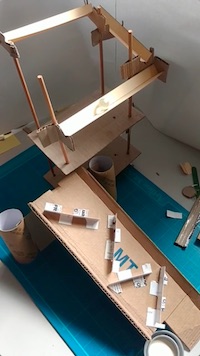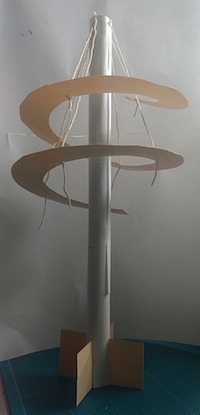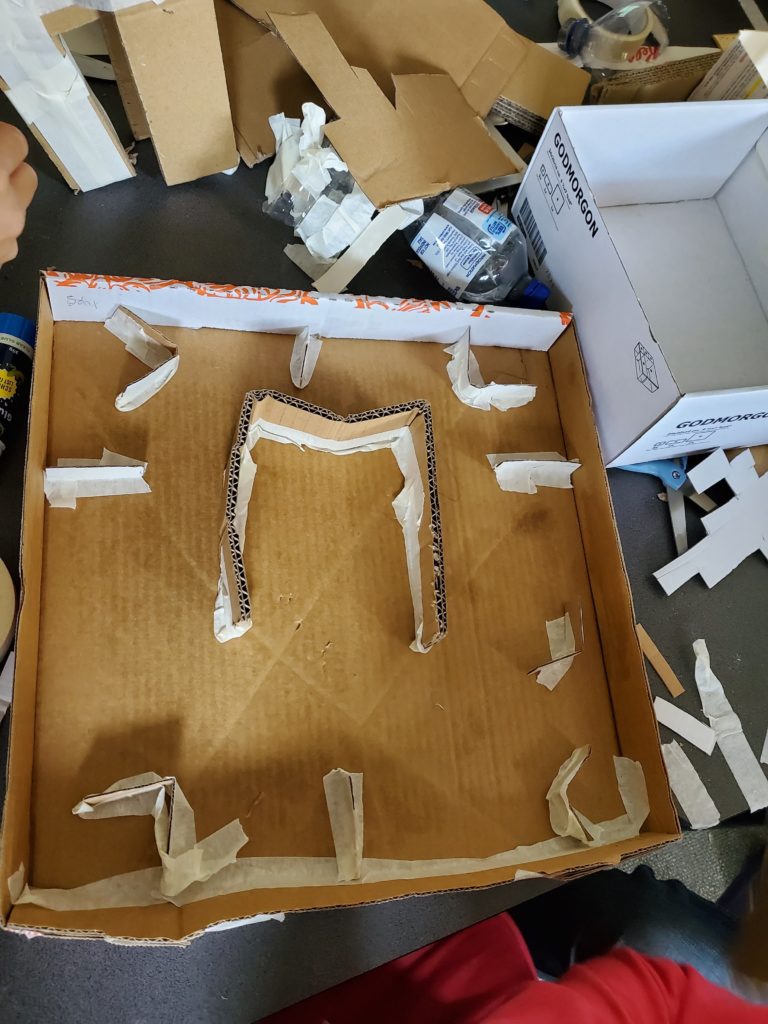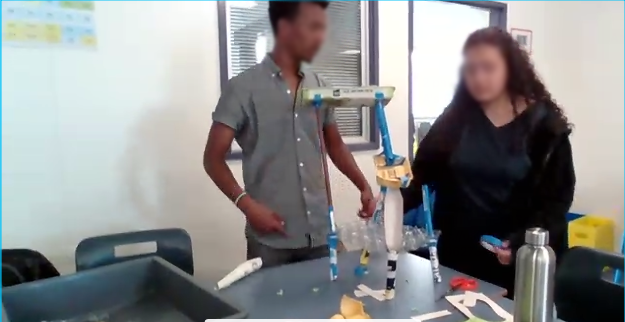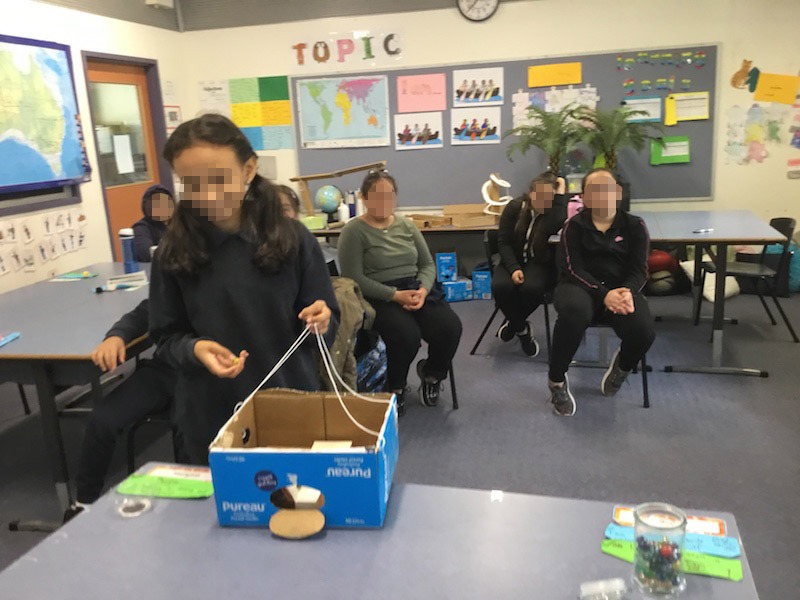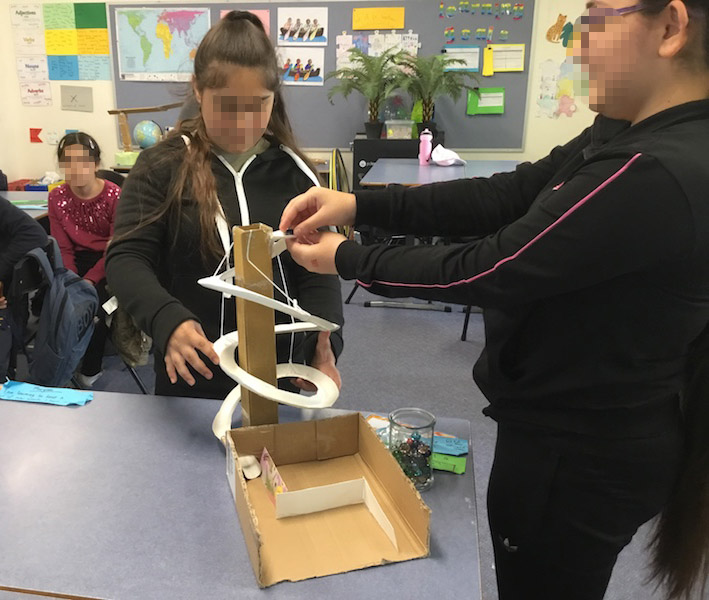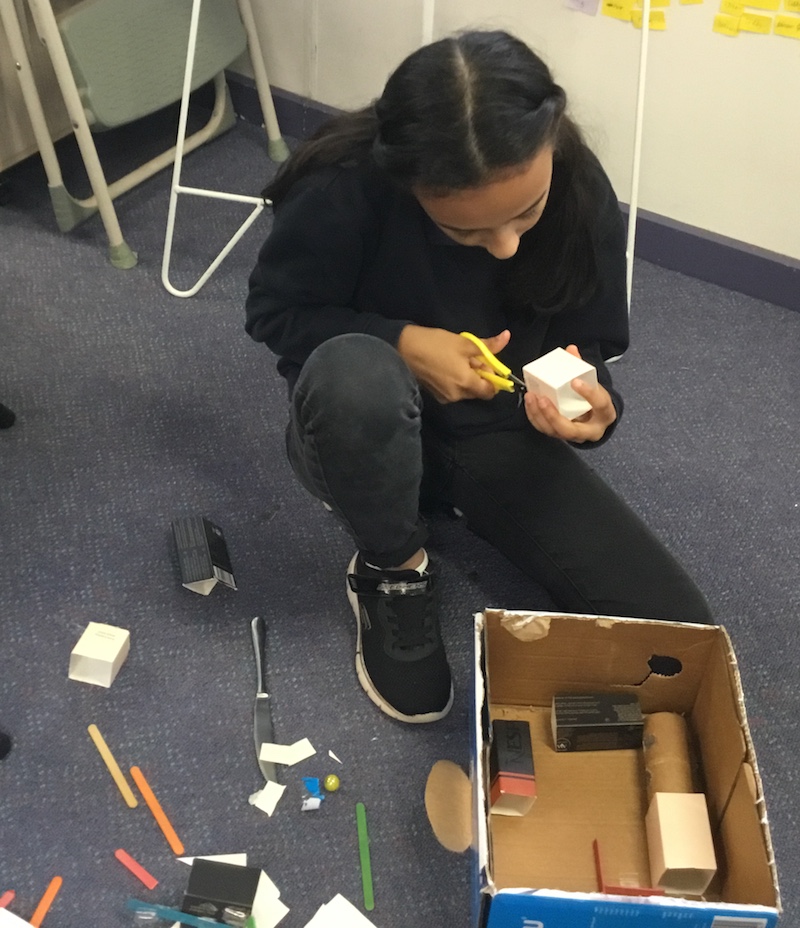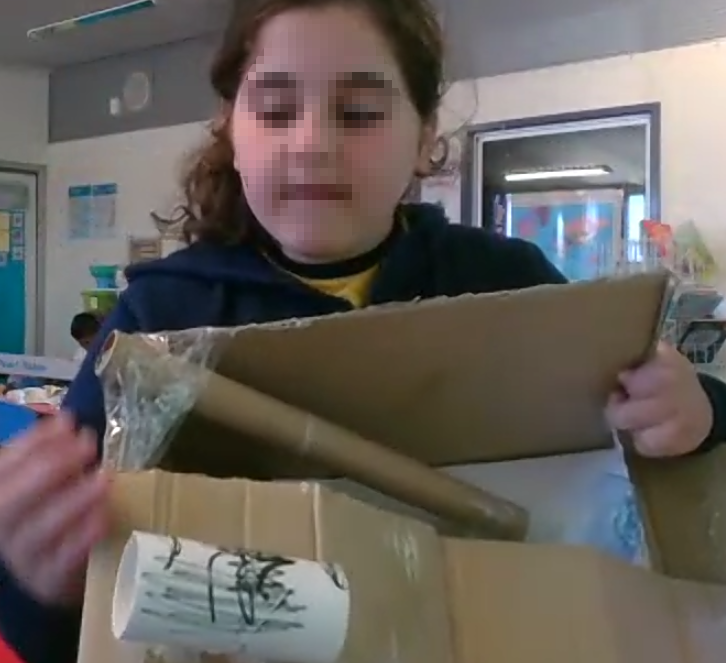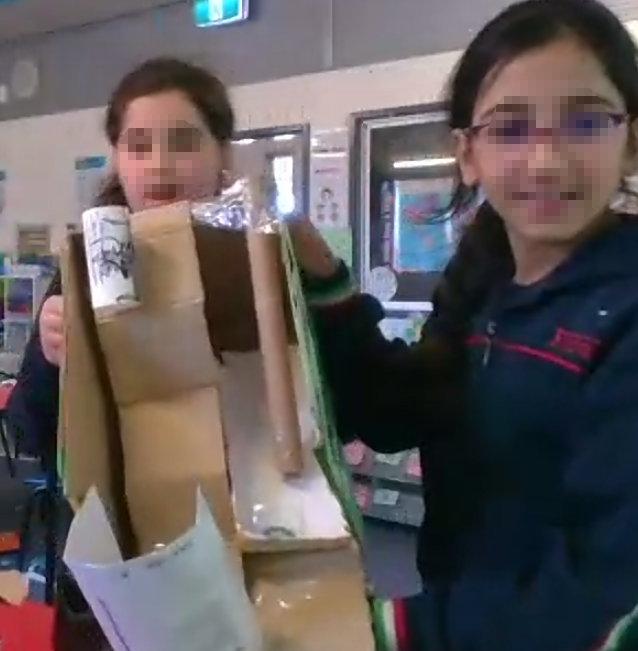I have had the pleasure to work with the students at a number of schools in Melbourne over the last few months while in COVID lockdown. The students that participated range in ages from 7 to 16, and are all recently arrived in Australia and attending these schools to develop their English language skills. Research shows strong evidence for the efficacy of makerspaces in developing language literacy.
I ran makerspace activities that required readily accessible materials and tools, within a limited time frame and, initially with the added condition that some students may be working from home. As I was not able to physically attend the workshops, I connected remotely via WebEx. I missed the face-to-face contact but was happy that we could do it at all. It proved to be a very rewarding and fun experience for all. Inspired as always by the students, I created alongside them to also help them understand other ways of working. Below are attempts at constructing marble runs using no glue or sticky tape. Thank you to all the teachers and students that enthusiastically supported the activities. #makerspace #steam #creativity #education
ENGLISH LANGUAGE SKILLS
“CELS provides intensive English programs to eligible students newly arrived in Australia from backgrounds other than English.” As mentioned prevously, research shows strong evidence for the efficacy of makerspaces in developing language literacy.
“When we offer maker learning as an option for English learners, we can increase student engagement in learning, develop expressive language skills, and foster reading ability. Offering hands-on learning in a makerspace allows English language learners to engage with their peers in creative and collaborative ways.”
from https://ideas.demco.com/blog/maker-learning-for-english-language-learners/
The tasks, setting and open-endedness of the workshops motivated students to try and explain their ideas and describe their work in English. The language learning was seamlessly embedded as students lost themselves in the making and collaborating. The sessions progressed organically and iteratively. Ideas from the students in one workshop fed into the subsequent workshops so that all student input was appreciated, respected and valued. Consequently, students confidence built as they saw their own work and that of the other students integrated into the workshops. Students came to me with and for feedback – and in doing so, showed others their work and got to see other students’ work. This cross-fertilsation of ideas shifted the making to another level, reinvigorating the students with new ideas and the confidence to attempt to incorporate them into the own work.
As one teacher mentioned, “for me this was part of the magic.” The students practiced their English language skills in all workshop phases and processes: showing their work, asking questions, seeking or giving feedback, troubleshooting, delegating tasks and so on. These exchanges occurred with either myself via the remote video facility, the teachers in the classroom, with each other or in some instances, to all simultaneously. Practising asking for specific help in English is excellent practice for these students as they prepare to transition to mainstream schools. All of the students in most groups had the chance to finish in class in the days following.
Extension activities (after the workshops had finished) provided further opportunites for English language use. The extension activities included such things as making videos filming each other (using Seesaw) talking about their work which enabled them to practice discussing and presenting their work. In these videos, they discussed what they enjoyed and what was difficult and easy about the workshops and processes. The collated videos were shared at the graduation assembly.
The students who collaborated from different language groups spoke lots of English to each other throughout the process. This was very evident at Collingwood where there are many language groups not just Arabic as is the case in one of the schools. For example – Chinese and Somali pairs, Spanish and Thai pairs and so on.
STEAM
The makerspace project has always been envisaged as a space that cross-curriculum, integrated student-driven activities could be pursued, a space that lends itself well to engagement with STEAM: Science, Technology, Engineering, Art and Mathematics. In practice and from observation the activities and practices could be seen to address many aspects of the curriculum. A brief overview follows:
Science: Physical Sciences – understanding the nature of forces and motion, and matter and energy. The marble’s motion (direction, speed and acceleration) is influenced by a range of contact and non-contact forces such as friction and gravity.
Curriculum connections: Science: Physical Sciences
Technology: Tools – although limited to a few tools, these are used in a myriad of ways to facilitate working with the materials at hand. Some creativity and invention is also required with the tools. For example, we discovered that a serated butter knife is very good for cutting cardboard but also very safe. Cardboard construction methods were investigated and we discovered that much could be done without glues, tapes or other adhesives. The design process was followed simulating a real-world situation.
Curriculum connections: Design and Technology.
Engineering: Students were shown many examples of ‘real world’ objects that resembled marble runs so that they could envisage their constructions as engineering models, design prototypes or architectural marquees. A simple example is that of an amusement park roller coaster or even a Roman aqueduct.
Curriculum connections: Design and Technology, Science, History.
Arts. Aesthetic qualities of the materials and the assemblages was a point of fascination for some students. With some scaffolding and structure this could be further integrated.
Curriculum connections: Arts.
Mathematics. Students traversed simple mathematical concepts through attempts at constructing cones, tubes and other 3 dimensional geometric objects.
Curriculum connections: Mathematics.
Cross-curriculum priorities: Learning about Sustainability. In relying soley on recycled materials, the students gained an appreciation of the ‘value’ of what is otherwise perceived as rubbish.
General capabilities: Critical and Creative Thinking, Ethical, Intercultural. Personal and Social (more to come …)
Facilitating Remotely
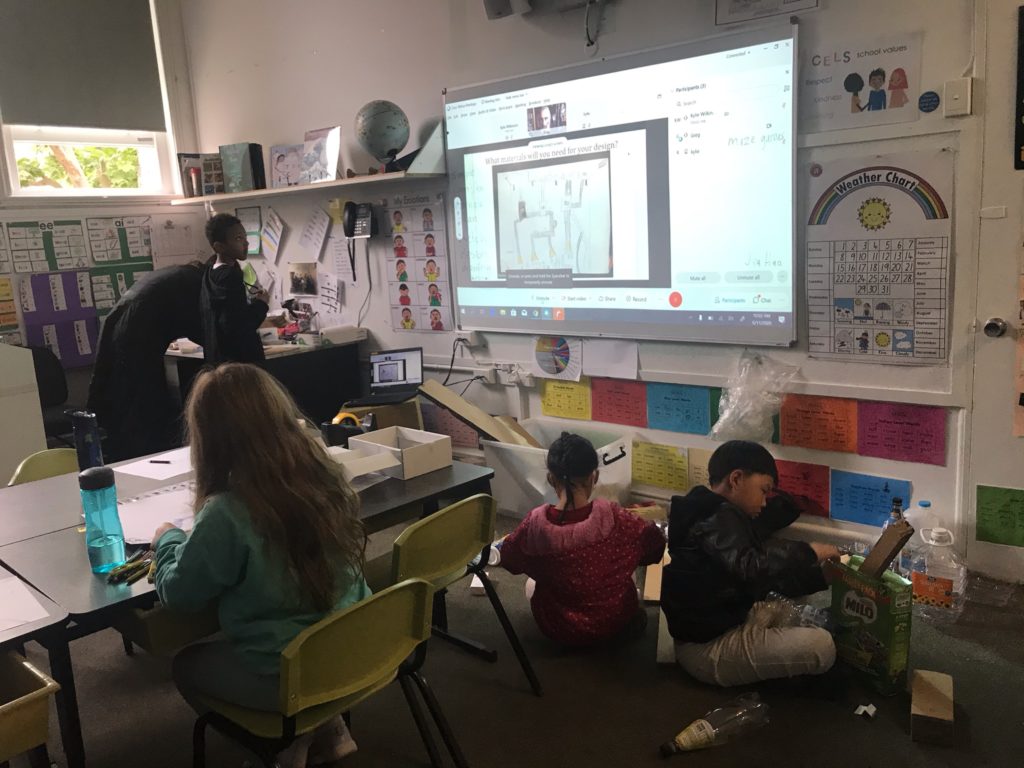
The classroom view 
working alongside the students remotely 
Upclose with the ‘roving eye’ 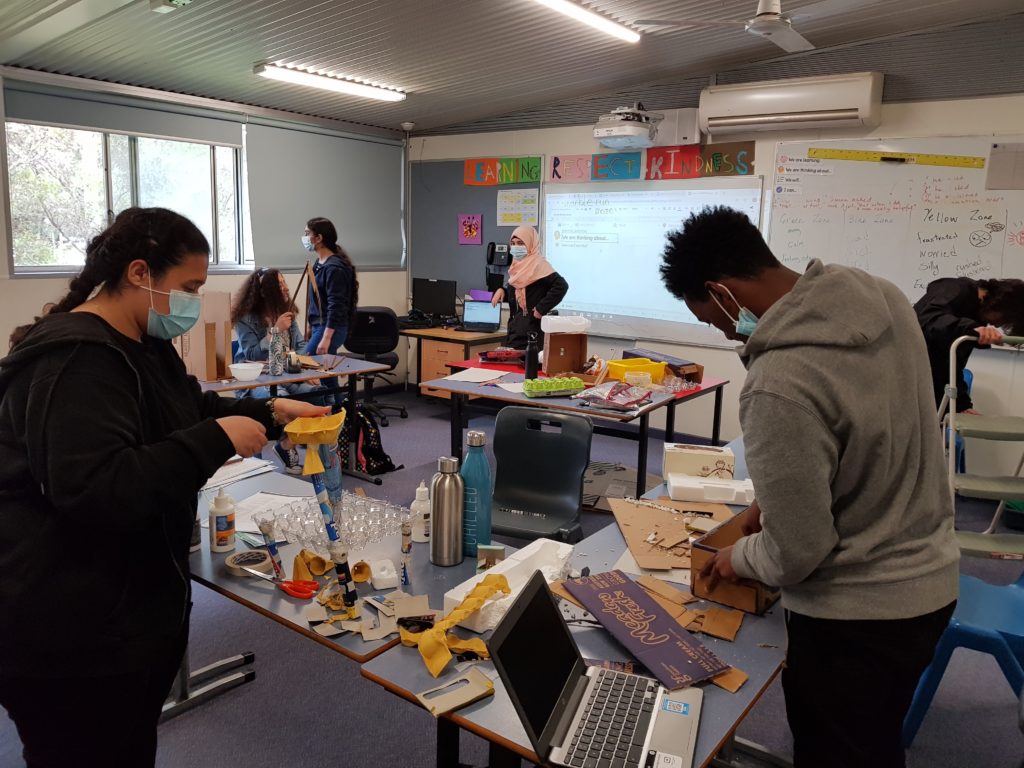
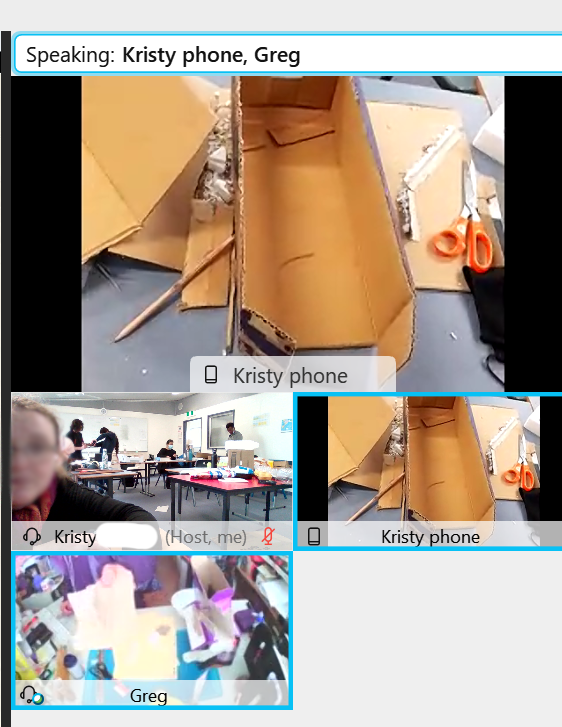
object detail, classroom and remote workspace
Design
Students were required to show a design before proceeding. This helped them to articulate their ideas visually and verbally. It was also a moment to provide some feedback and encouragement. Each student/group would take turns showing their design and describing it as best as they could. The sketch or ‘design’ proved to be particularly important for those working in pairs as both members could clearly see their objective. It also helped to maintain focus throughout the session.

design 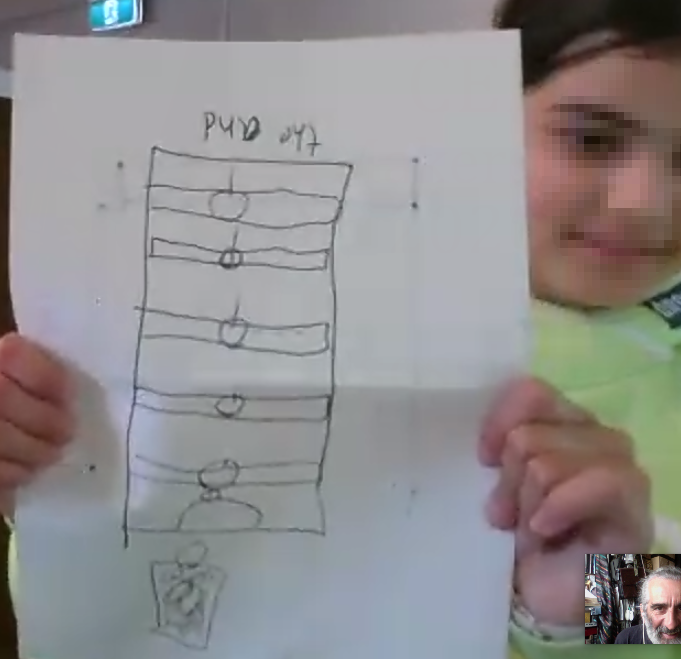
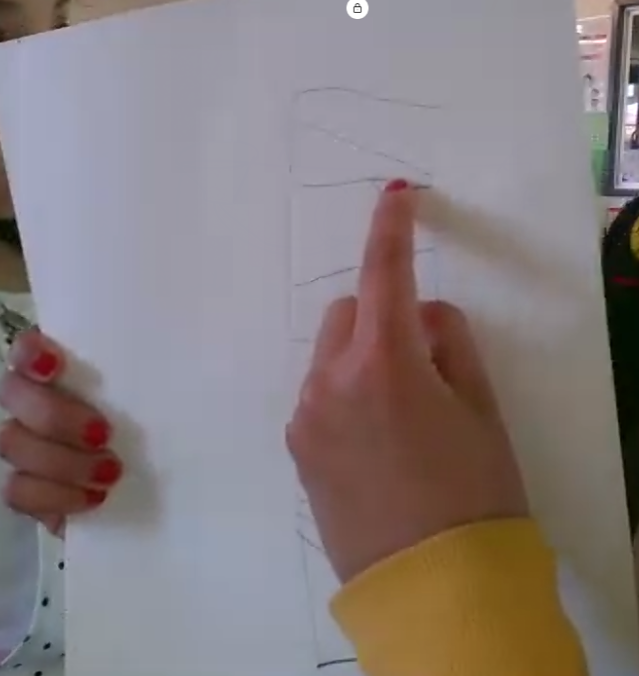
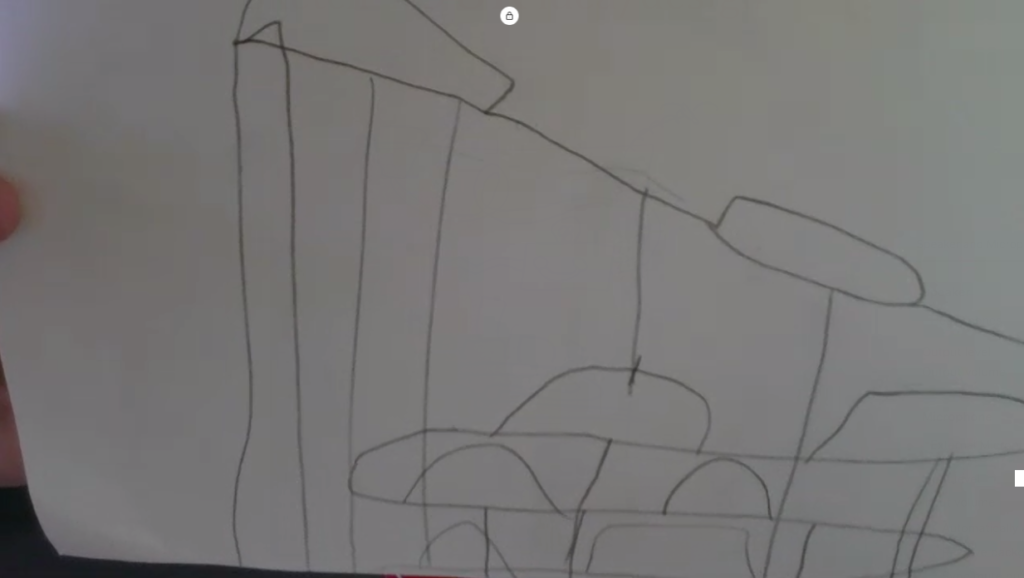
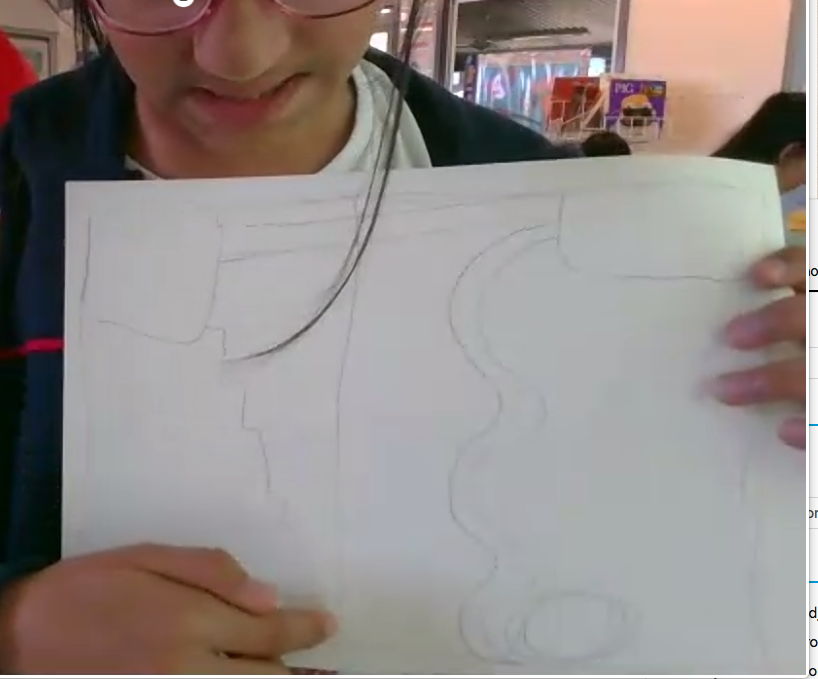

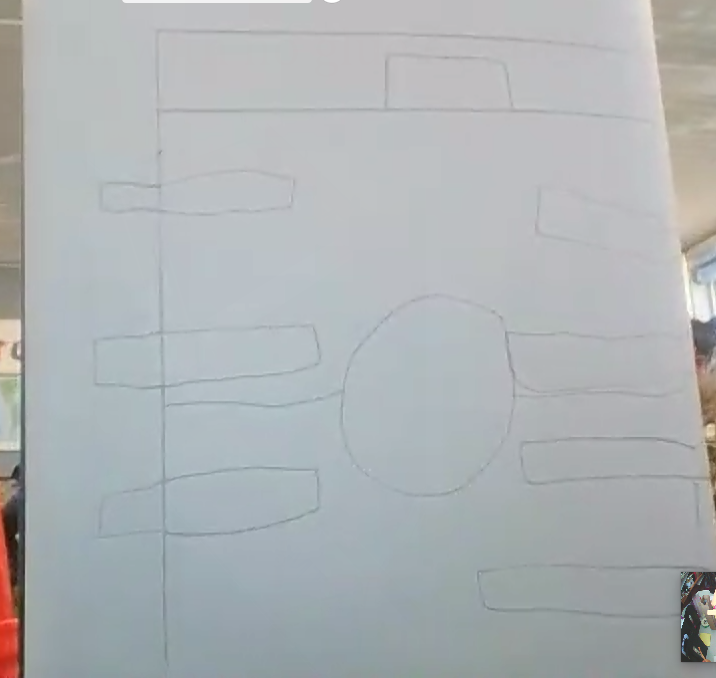
Middle Primary – Col

Proudly displaying their work 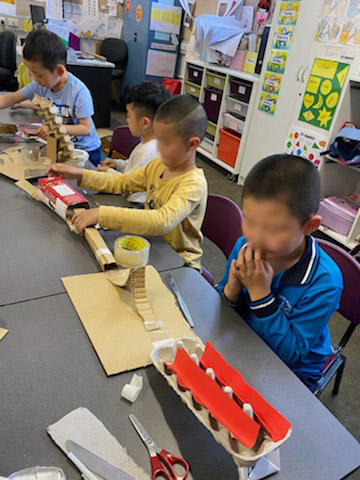
concentration 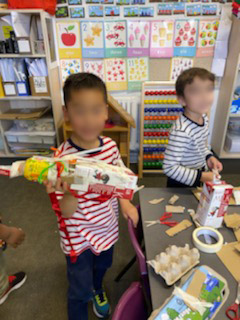
creative use of materials


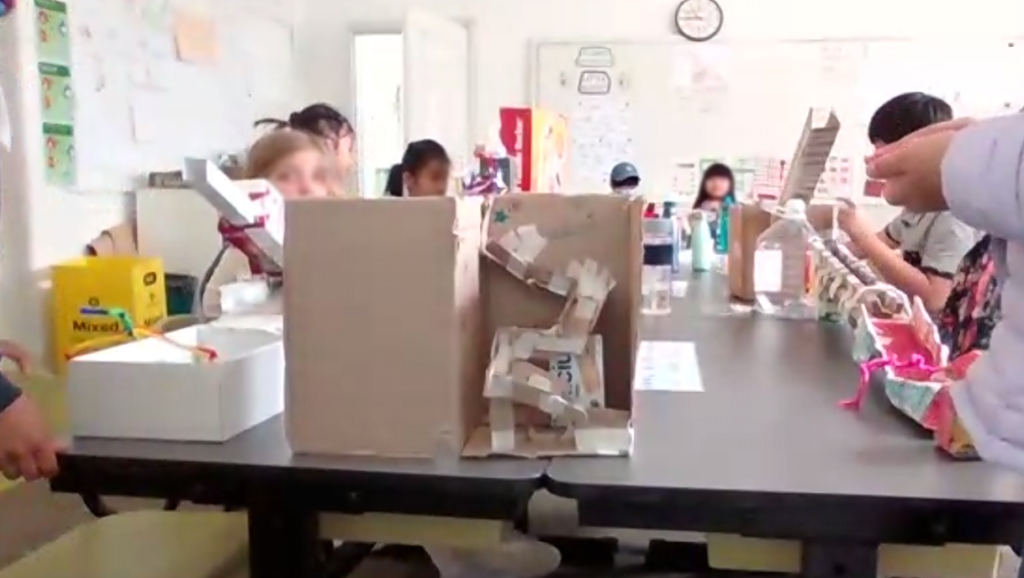
Upper Primary – Col


A gaming variation 
Senior Secondary – B
Senior secondary students with a lot going on in their lives finding moments of respite as they prepare to transition after a remarkable year.
Students had the option of working alone or in pairs. Pairs were encouraged as this allowed them to but also necessitated that they exercise their communication and collaboration skills.
Upper Primary – B
The students took great pride in showing their creations and the students were very interested to see what their peers had come up with. An important but often overlooked aspect of making is the exhibition of the works. This reinforces to the students that their works are important and valued. What did prove difficult was to communicate to the students that despite not having ‘finished’ the process was just as important and that not finishing is not to be taken as failing in this context.
Teachers commented that they felt as though the students had barely scratched the surface and extra time would have been good. Many students were concerned that they would not have the time to finish as we neared the end of the second and final session. In the physical maker spaces, I generally recommend much more time to allow the students to truly explore, play and tinker. The allocation thus far has been at least 2 hours a week for a whole term (~10 weeks) per student group. The students become immersed in the exploration and freedom and time generally passes too quickly. Unfortunately, structural and institutional constraints do not support this openness of time and space to the detriment of the students’ learning and engagement so I feel very fortunate for the students when I can find a situation that supports this.
Upper Primary – Cra

diy tubes 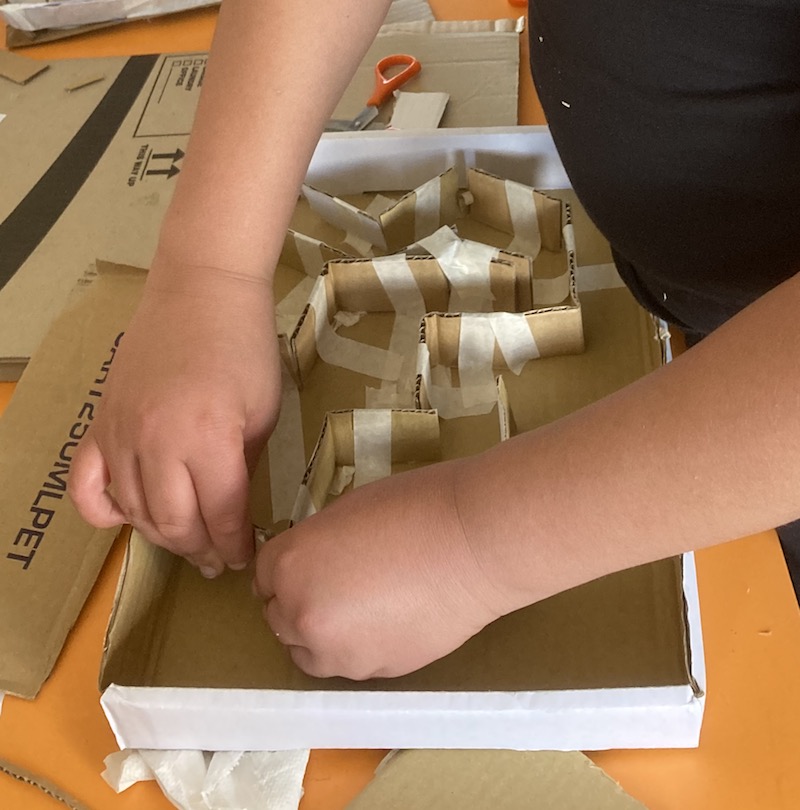
maze 
slide 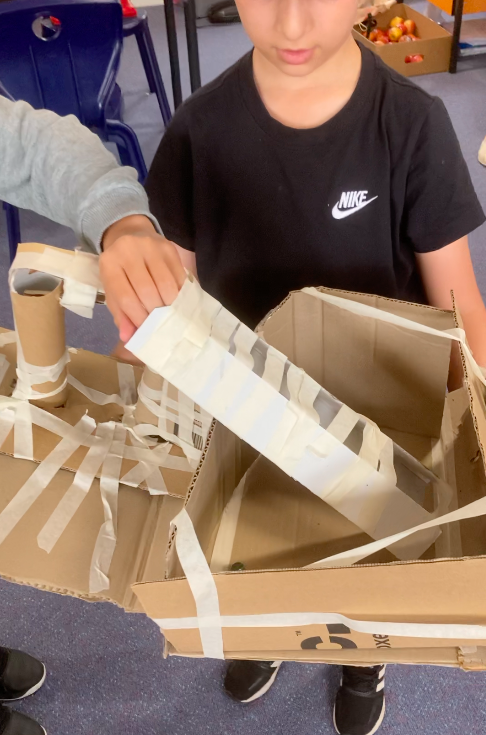

hybrid 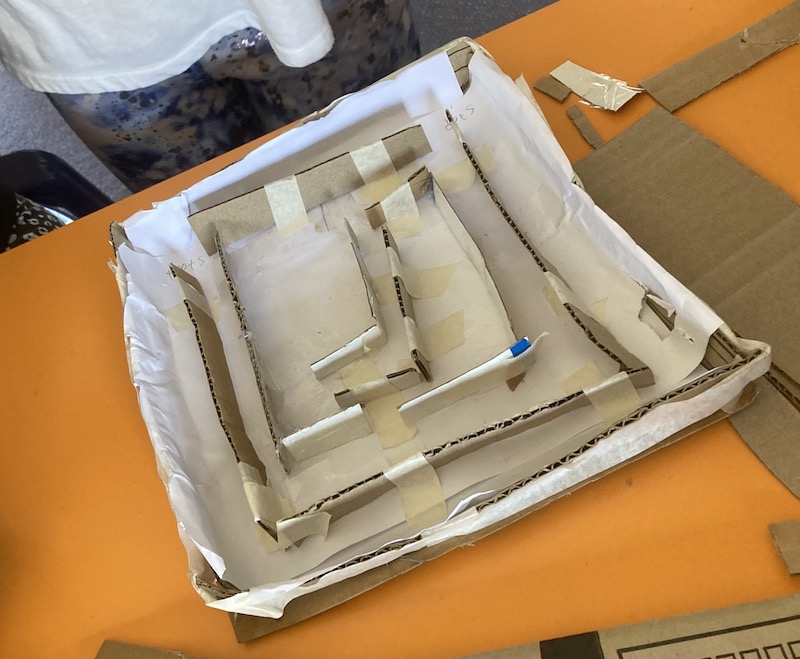
maze variation 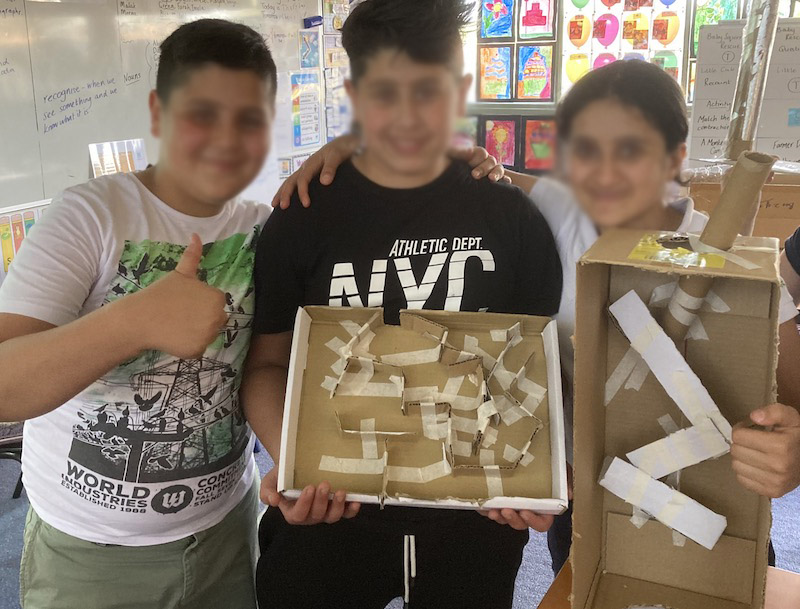
vertical and horizontal 
pillars 
vertical zig zag
Session 2 was generally facilitated with examples of cardboard construction after a better understanding of the challenges students struggled with. Many of the ideas were incorporated into subsequent iterations of the constructions. Sticky (aka cellotape) tape was seen as the go-to solution for every problem and I tried to show the myriad of cardboard connection methods that could be used instead. Some were embraced, others did not translate well until the on-site teacher was able to demonstrate with a physical example.
